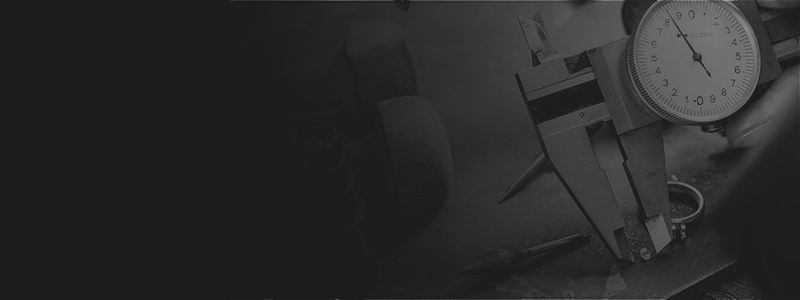
Guide
What diamond criteria to favour ?
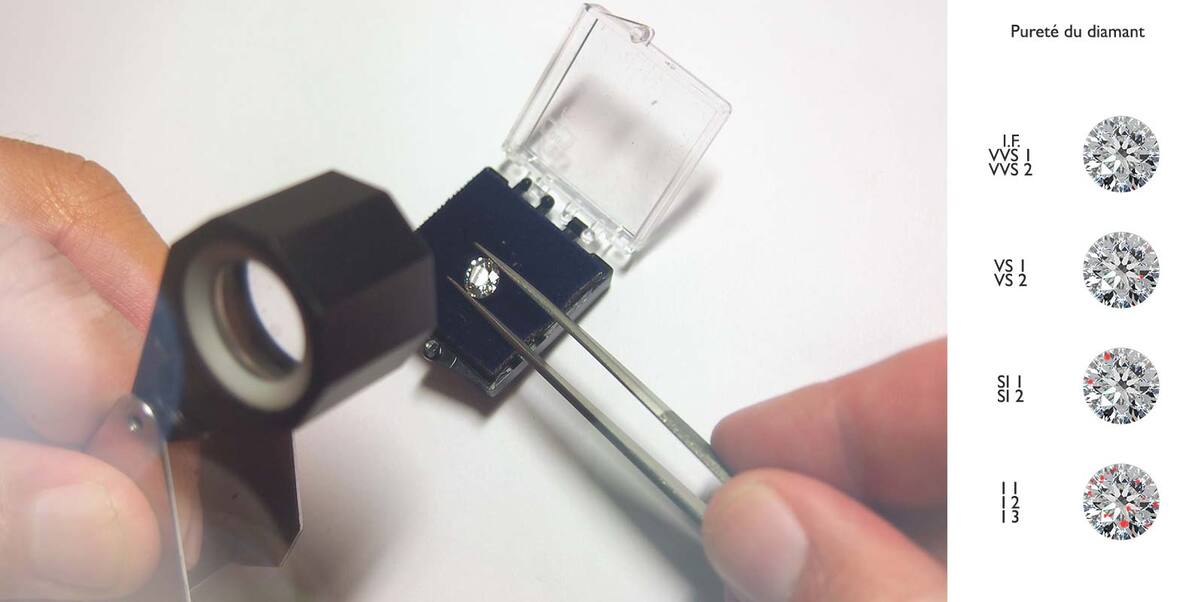
Almost all diamonds contain minute traces of uncrystallized carbon, called inclusions. Most are not visible to the naked eye and require magnification with a X10 loupe or microscope to be observed. They are the imprint of nature and make each diamond unique. However, the fewer the impurities, the purer the stone and the higher its value.
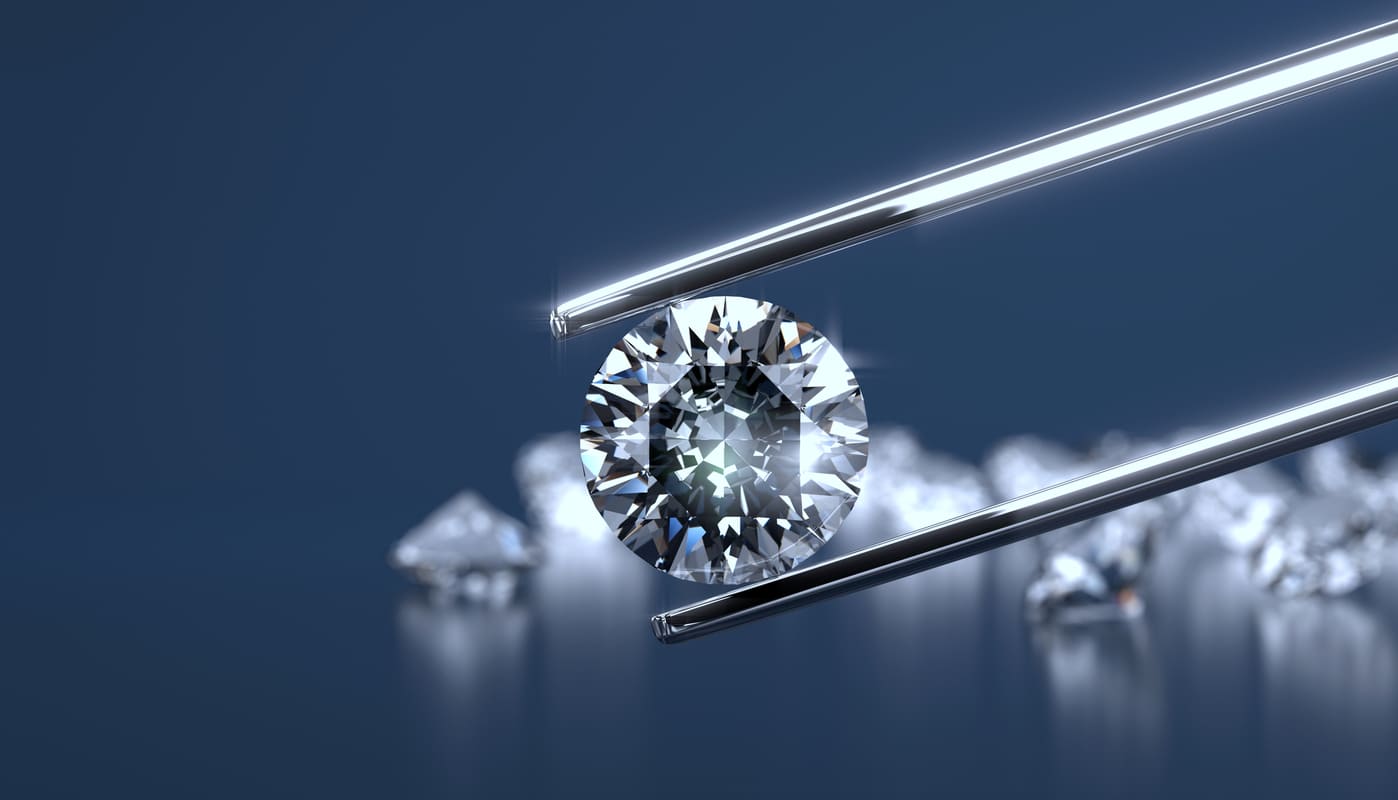
The size of the impurities and imperfections determine the clarity of a diamond. Diamonds with the fewest and smallest inclusions are assigned the highest clarity grade. Diamond clarity grades are measured by the gemologist under a x10 magnifying glass and are qualified on a scale of IF (Internaly Flawless) to I (Included), with each category having a gemological definition to be read further down on this page in the chapter "how to define the clarity of a diamond? ". To combine the purity criteria with the other criteria (weight, color, cut...), we recommend you to read our article dedicated to Which diamond quality criterion to choose ?
Note that the very high refractive index of light in diamonds and its great power of reflection make most inclusions difficult to see with the naked eye. These small natural defects and inclusions are microscopic and do not alter the beauty and brilliance of the diamond. The presence of inclusions visible to the naked eye is called "pitted diamond" (P).
In 1953, Richard T. Liddicoat and his collaborators established the Gemological Institute of America (GIA) diamond grading system and purity scale. Also known as the Diamond Grading Table, the complete list of diamond grading categories and diamond purity grades is shown below. To purchase a diamond require an independent and recognized certificate (GIA, HRD or IGI) attesting to the purity.

In French we say "Pur à la loupe" under x10 magnification. For the purchase of an IF diamond, also require a recognized certificate.
Very difficult to see with a 10X magnifying glass. Position and number of inclusions determine the difference between VVS1 and VVS2. For the purchase of a VVS diamond also require a recognized certificate.
Difficult to find with a 10X magnifying glass. Position and number determine the difference between VS1 and VS2. Require a recognized certificate.
Easily (*) visible with a 10X magnifying glass (* easily... by an experienced professional) and does not affect gloss. SI1 and SI2 represent good purity, above the so-called "commercial" quality generally found in trade. A beautiful S "i" represents an "i "intelligent choice (but not all SI's are equal). Certificate always recommended.
SI3, a "limit" category to be chosen with great discernment "eyes wide open". Choose Si3 "off center".
Visible to the naked eye (by an experienced professional) and slightly affecting the brilliance, but mostly affecting the very idea of the beauty of the diamond.
Larger and/or numerous inclusions, visible to the naked eye and diminishing shine, clearly for I3.
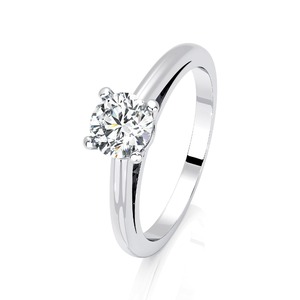
Engagement ring
4 Claws Classic
Solitaire diamond with 4 claws, a classic and timeless style. The highlighting of the diamond…
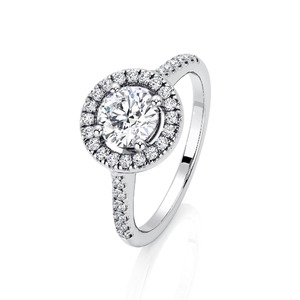
Ring
BRILLIANT
The perfect gift for your ever lasting love. Hand made french jewellery. Gold 750/000. Delivered in…
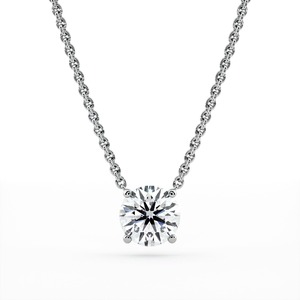
Pendant & Necklace
4 CLAWS
4 claw diamond pendant without bail. Forçat chain fixed by 2 rings on each side of the…

Wedding Band
RUBAN
Classic diamond wedding ring. 18 carats gold. Made in France. Delivered in a jewellery box. See…
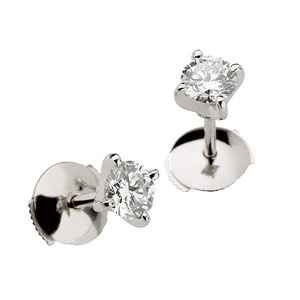
Earrings
4 CLAWS CRADLE
Handmade diamond earrings, 4 claws heart-shaped cradle setting. Elegant exclusive design by…
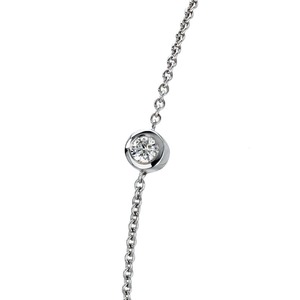
Bracelet
ETERNITY
Diamond bezel bracelet. Very popular, a style that is both classic and contemporary. 18 carats…
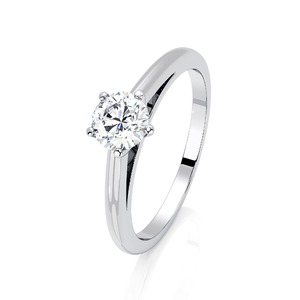
Engagement ring
5 Claws Classic
Solitaire diamond with 5 claws. Solitaire offered in 18k white, yellow or pink gold (750/000) or in…
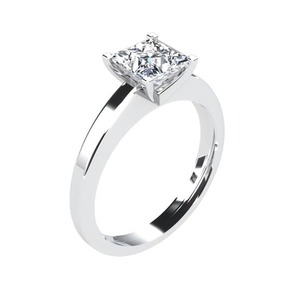
Ring
PRINCESS ROYAL
Style full of sparkle without being ostentatious. The dawn of passion and romance. Hand made to…
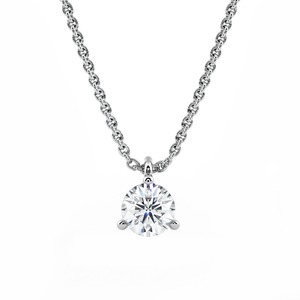
Pendant & Necklace
3 CLAWS B
Diamond pendant with 3 claws to enhance the stone as much as possible. Crimping carried out with…

Wedding Band
NOCEA
A modern style: diamonds are entwined in a crimped said "rail", a very contemporary…
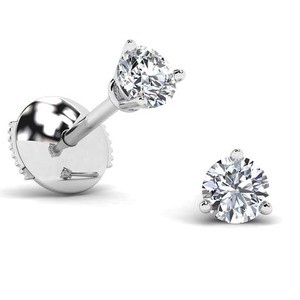
Earrings
3 CLAWS PREMIUM
Handmade earrings with diamond belt based on mid height of the claws which are based on a rabbet.…
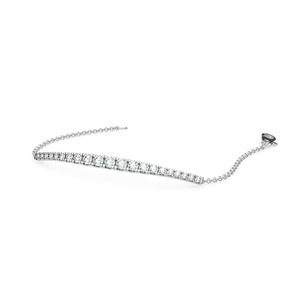
Bracelet
ERGO
Very modern, bright without being ostentatious. Pleasure of playing with the brilliance of…
Five criteria
The first thing to look at is the size of an inclusion. The larger and more visible it is, the lower the degree of purity. This is the most important criterion. IF, VVS, VS type inclusions are not visible to the naked eye and it is with the x10 magnifying glass that they are distinguished and classified. Inclusions of type SI1 and SI2 are very difficult to see with the naked eye, especially on stones weighing less than 1 carat. From I1 (Piqué 1) the impurities are easy to see with the naked eye and affect the brilliance of the stone.
We also count the number of inclusions. The fewer the number, the purer the diamond.
The third criterion is the location of the impurity. Is it under the table (most visible) and close to a breech? Is it on the side of the stone, under the crown (less visible). This has no impact on the classification of the degree of purity of the stone. Regardless of the location of an inclusion, the evaluation of its degree of purity remains the same. For IF, VVS and VS gemstones, the location of the inclusion does not matter because it is invisible to the naked eye and does not affect the brilliance. But for impurities lower than SI1, this criterion is to be taken into account when buying a diamond: indeed, it is better to have an inclusion hidden under the crown than an inclusion in the middle of the table, more easily visible and more penalizing for the brilliance of the stone. That said, this notion of the location of the inclusion is especially to be taken into account for purities lower than SI1, i.e. for SI2 or Piqué. And to be taken into account for SI1, from the moment the stone weighs more than 0.50 carat. For more information on the location of an inclusion of a stone in our catalog, please do not hesitate to contact us.
Is inclusion internal or external? Diamonds with internal characteristics cannot be classified as flawless or pure under a magnifying glass (IF = internaly flawless). On the gemmology certificate (GIA, IGI and HRD) it is indicated whether the inclusions are internal or external. In the vast majority of cases, they are internal.
The color and relief of the inclusion is primarily a measure of the visibility of an inclusion, or the contrast between the feature and the rest of the diamond. It is better to have an impurity scattered throughout the stone than concentrated in a single point and therefore more pronounced. However, as with the location of the inclusion, this criterion is to be taken into account for impurities of the SI2 and Pitted type. And for impurities of type SI1 for diamonds over 0.50 carat. For IF, VVS and VS, this criterion has very little impact as inclusions are very difficult to see with a magnifying glass and invisible to the naked eye.
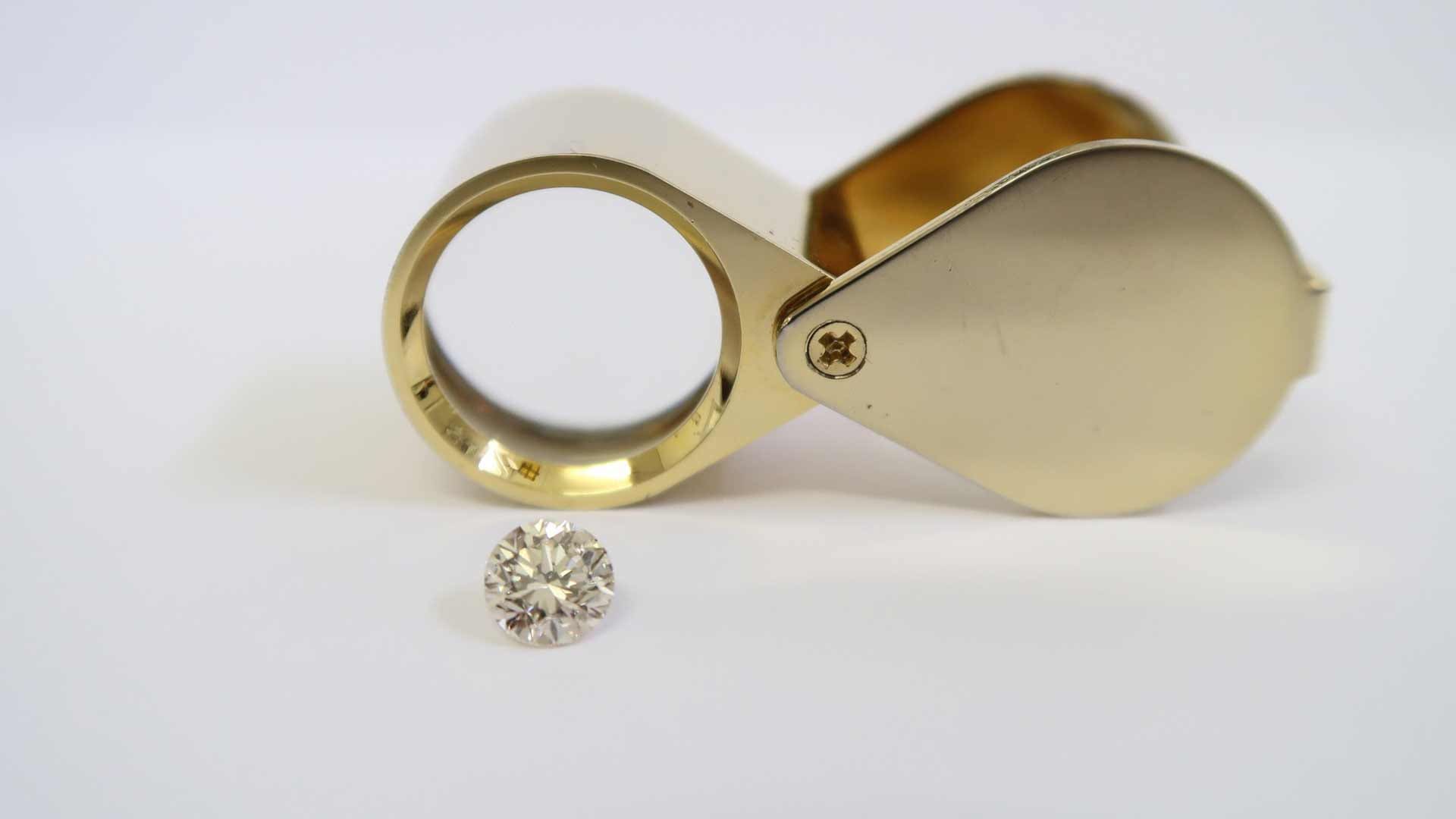
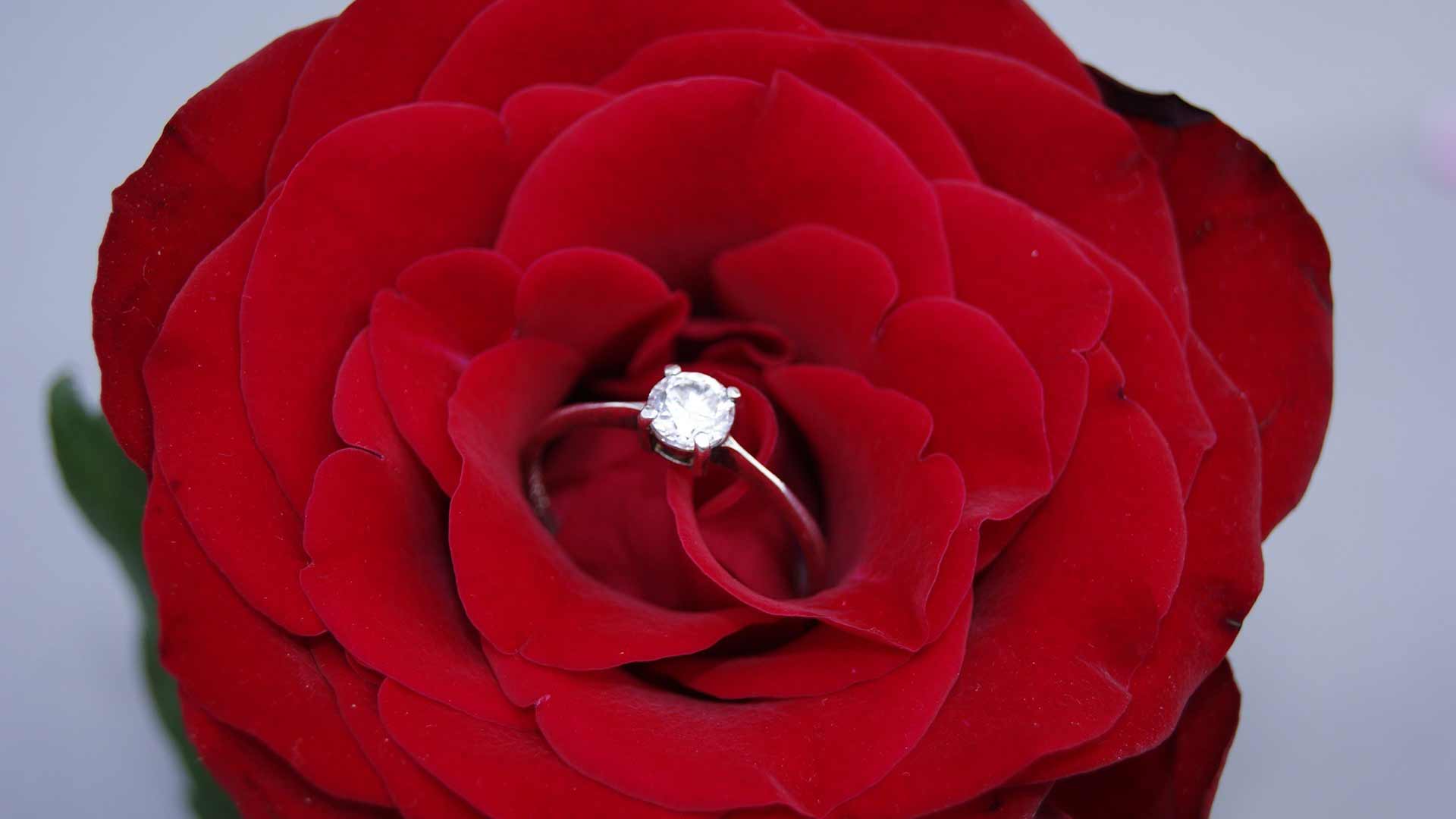
To recognize the purity of a diamond, there are 2 methods: learning to examine a diamond with a magnifying glass (which requires training and especially a lot of practice), or learning to read a certificate (which is much simpler). Below, we explain the 3 golden rules to read a certificate:
Check the type of certificate: there are many certificates on the market, but only three of them are worldwide recognized as independent and rigorous by the profession: the GIA, the HRD and the IGI (see link above).
1) We recommend that you rely on only one of these three certificates for the purchase of a certified diamond over 0.30 carat.
2) Verify that the certificate number is engraved on the roundel (circumference) of the diamond. On the certificate is then written: "laserscribed".
3) Understand the diamond purity scale which goes from the best IF to the lowest (Included).

It is not necessary to be a diamond expert or jeweler to be sure that your diamond has the degree of purity you want. It is especially important to be vigilant and to require a GIA, HRD or IGI certificate, then to understand the impact of the degrees of purity in order to choose the purity of your diamond as a connoisseur.
Surface imperfections are called surface defects, and internal defects are called inclusions.
Clouds
Feathers
Crystals or minerals
Knots
Caries
Cleavage
Internal Grainage
Polish lines
Scratches
Nicks
Pits
Chips
Breaks
Dark or light spots
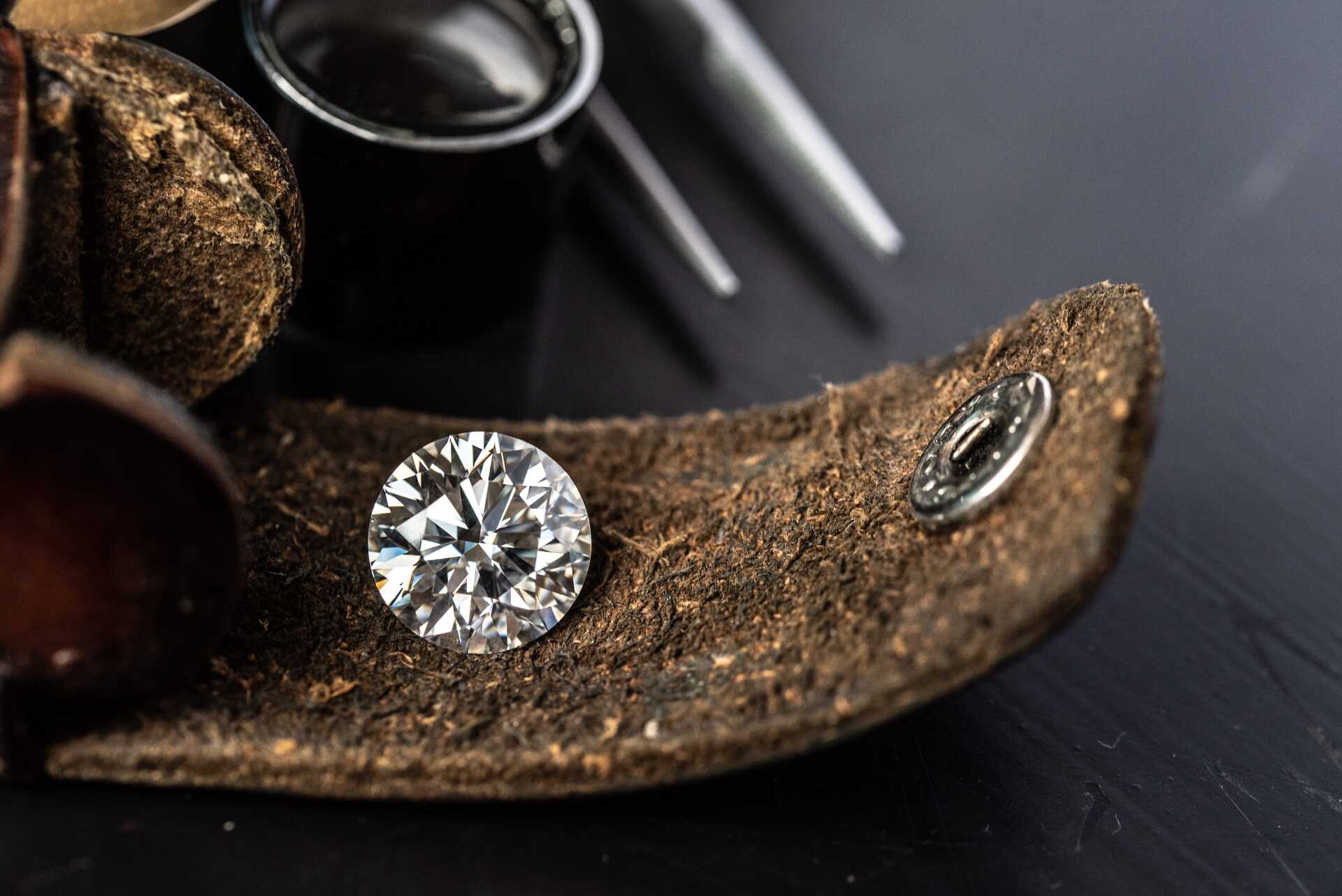
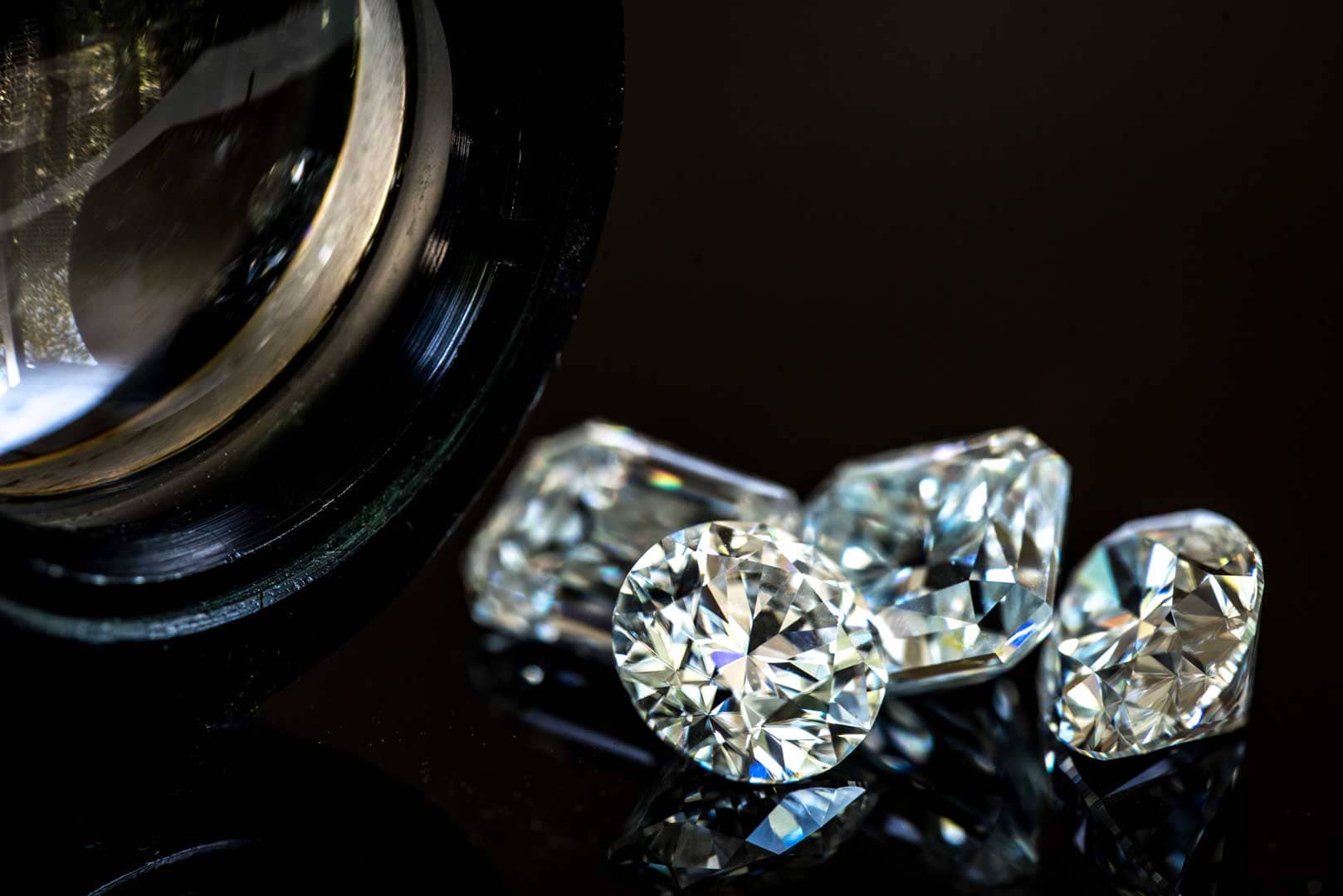
The size of the facets (the multiple mirror surfaces on the diamond) increases as the carat weight of the diamond increases. The larger the diamond, the more inclusions are easily visible. Remember to prioritize a higher degree of clarity as your diamond increases in size.
If for budgetary reasons you choose a diamond with fairly large inclusions of the SI2 or Pique type, then be sure to ask for the location of the inclusions. Prefer a diamond whose inclusions are on the sides of the stone, and can be partially if not completely hidden at the time of setting, under the claws of the gold or platinum jewel and which come to set the stone.
The symbolic value of a diamond is strong. The choice of a diamond goes beyond purely rational criteria. If you are very demanding on quality, we strongly recommend that you opt for IF or VVS purity. These are in fact the purities offered by high jewelry houses.
Choose a diamond with VS2 or SI1 type inclusions, as inclusions are present but very difficult to see with the naked eye and do not alter the brilliance of the stone. Indeed these diamonds are much cheaper than IF and VVS type diamonds, while they are already of a very high degree of purity and without falling into the low purities (SI2 and Pitted) that can be seen with the naked eye and affect the brilliance of the stone.
If maximizing the volume of the stone is your priority, we suggest that you choose a diamond of SI1 or SI2 purity, which will allow you to optimize the carat weight of your stone. However, it is highly recommended to avoid at all costs the piqués (I1, I2...) because they are very easily seen with the naked eye and strongly alter the brilliance of the diamond. For stones weighing more than 0.50 carat and even more from 1 carat, make sure you know where the inclusion is located if it is of type SI1 or SI2.
For more expert advice, we recommend that you read the page which diamond purity to choose?
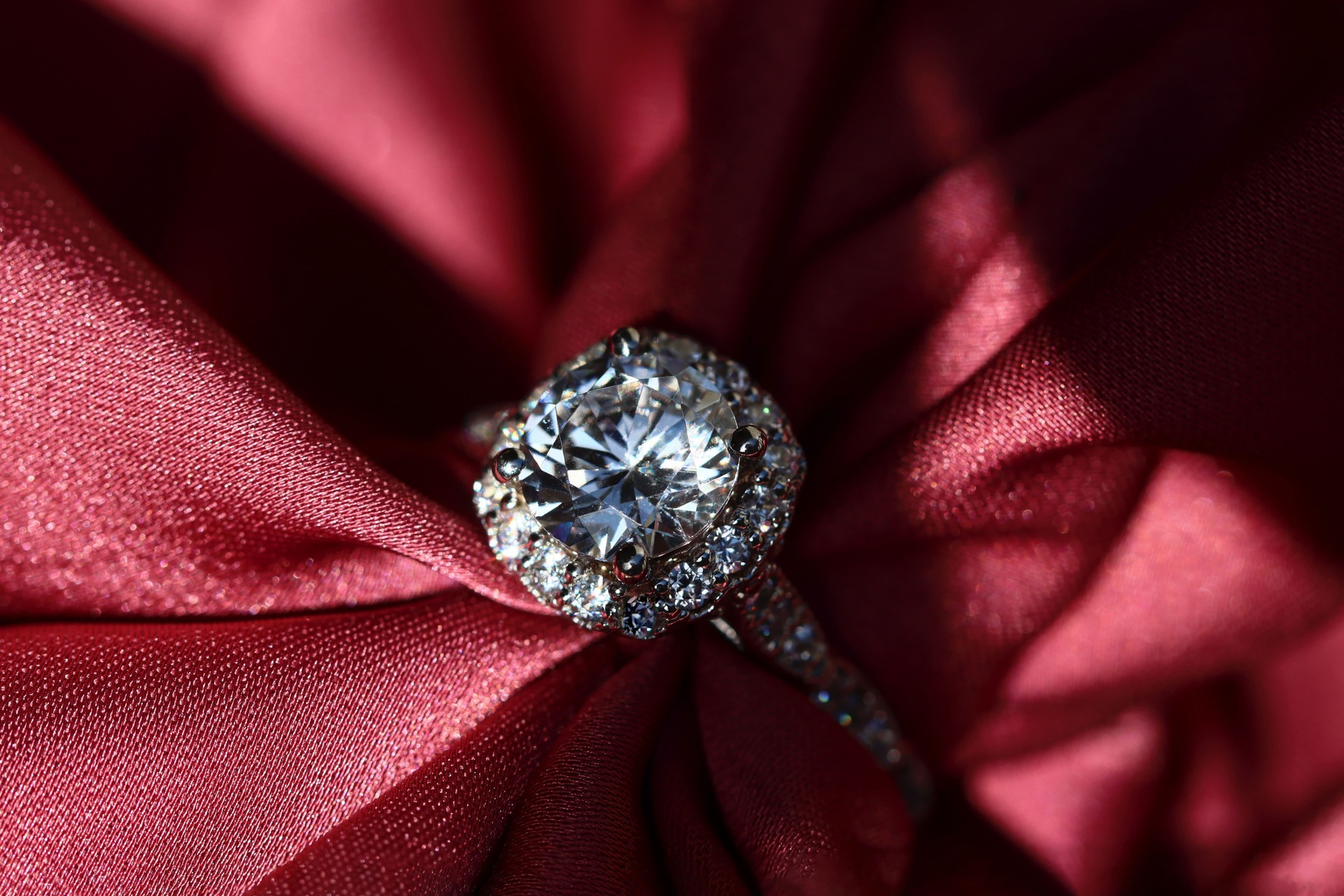
In absolute terms, there is no right answer to this question, because it is above all a question here of personal preferences and priorities. But let's say that from a visual point of view, it is certain that as long as we are in a degree of purity higher than VS2, that is to say IF, VVS1-VVS2 and VS1-VS2, the color deviations see better with the naked eye than purity deviations.
Indeed, the degrees of purity IF, VVS1-VVS2 and VS1-VS2 can only be seen with a diamond magnifying glass x10, or even under a microscope for IF and VVS1-VVS2. While the difference in the whiteness of the diamond can be clearly seen with the naked eye by the majority of people. And if your eye is sensitive to shades of yellow, it is better to stay in degrees of white between D and H, or even D and G.
To return to purity, it is important to specify that SI1 or SI2 are not bothersome from a visual point of view on diamonds weighing less than 0.50 carat. On the other hand, from 0.50 carat, a good eye can see some SI2 and from 1 carat, a good eye can see some SI1.
To sum up, between IF, VVS1-VVS2 and VS1-VS2 clarity grades, the difference is psychological: how pure do you want your diamond to be? For the SI1 and SI2 clarity grades, their visibility to the naked eye is linked to the carat weight of the diamond and the position of the inclusion (in the center or on the sides). For more information, do not hesitate to contact us.
French jewellery
Our slogan
Passion, Authenticity, Expertise
Certified diamonds
By 3 world-renowned laboratories


Exceptional quality of stone and jewel

Customer service at your service, provided by diamond dealers

Sealed diamonds with a certificate of quality and authenticity

French manufacturing

30-Day « satisfied or reimbursed »
guarantee

Online secured payment
De Hantsetters, diamonteers since 1888
Customer service at your service, provided by diamond dealers
All our diamonds are independently certified by 3 world-renowed organisations



Want to talk to a diamonteer ?
Contact us nowWe recommend the following 5 selections
To help you choose, we recommend 5 categories of diamonds that correspond to different purposes: Volume (maximizing weight), Balance (compromise weight and quality), Perfection (maximizing quality), Cut of heart (the i-diamonds recommendation), Promotion (one-time price offer).

Volume effectmaximize the weight of the diamond relative to its price, I-J color and SI1-SI2 clarity

Choice of balancefavor a good balance of color / clarity: F-G / VS1-VS2

Perfectionmaximize the quality of the diamond with the best criteria of color and clarity: D IF

Favorite's choicediamond selected by i-diamants for its shine, D-E color, VS1 clarity, cut criteria all rated

Promotionsdiamond with a 5% promotion
Carats / Diamond weight
Move the diamond weight slider and view the rendering on a hand, chest or ears.
Carat
mm (Approx.)
0,30 Ct
4,30 mm
0,40 Ct
4,60 mm
0,50 Ct
5,00 mm
0,70 Ct
5,70 mm
1,00 Ct
6,30 mm
1,25 Ct
6,90 mm
1,50 Ct
7,30 mm
Equivalence for round brilliant diamonds
Examples of different diamond measures

0,30 Ct

0,50 Ct

0,80 Ct

1,00 Ct

1,50 Ct
Diamond colours
Our recommandation
We recommend diamonds with a white hue between D (exceptional white+) and H (white) because the whiteness of the diamond increases its brilliance. From color grade I and J (slightly tinted) onwards, diamonds are slightly yellow-tinted: avoid on white gold and acceptable on yellow gold.
D-EExceptional white
F-GExtra white
HWhite
I-JSlightly tinted
K-MTinted white
N-ZVery tinted
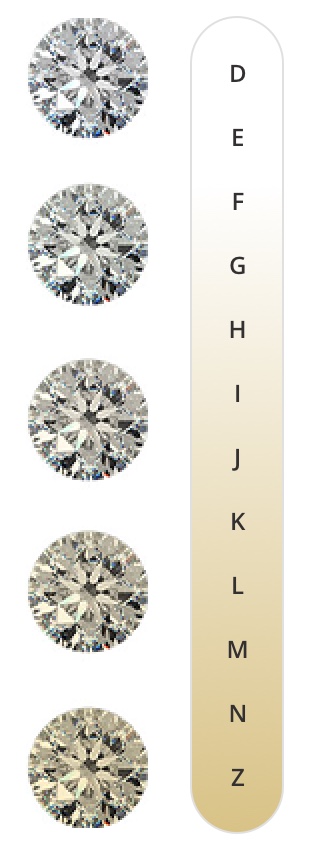
Diamond clarity
Our recommandation
We recommend that you avoid choosing a Pique diamond, because inclusions are easily seen with the naked eye, alter the brilliance and can even weaken the stone. The clarities included in VS and SI1 are the most recommended , unless you have the budget to let yourself be tempted by IF or VVS clarities, which sign the diamond in its highest dimension: that of purity.
IFPure
VVSVery very small inclusion(s)
VSVery small inclusion(s)
SISmall inclusion(s)
PIncluded
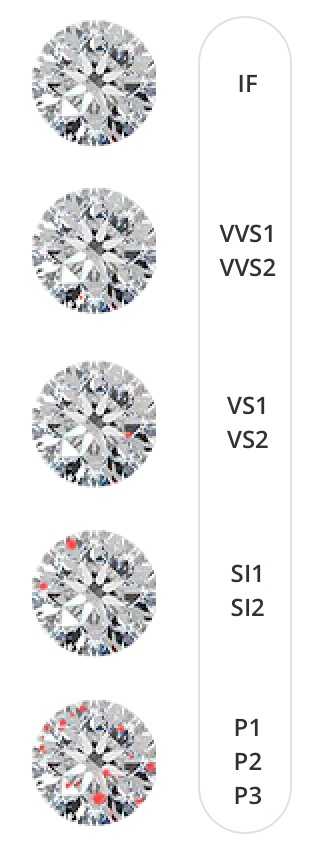
IF : Pure
No inclusion inside the stone
VVS1 VVS2 : Very very small inclusion(s)
Very difficult to see with a 10X magnifying glass
VS1 VS2 : Very small inclusion(s)
Difficult to see with a 10X magnifying glass
SI1 SI2 : Small inclusion(s)
Easy to see with a 10X magnifying glass and difficult to see with naked eye
P1 P2 P3 : Included
Easy to see with naked eye
Diamond cut
When a diamond is well cut, light reflects from one facet to the other, making the most of the diamond's high refractive property. A less well-cut diamond lets some of the light escape.
Our recommandation
We advise you to choose a diamond with a quality rating equal to Excellent (EX) or Very Good (VG) to maximize the refraction of light and therefore the diamond brilliance.
EXExcellent
VGVery Good
GGood
FFair
PPoor
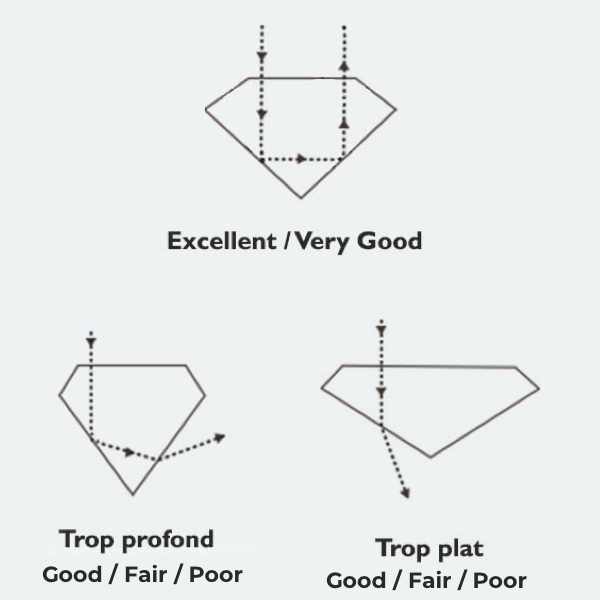
Most recognized certificates: GIA, HRD and IGI
Always ask to see the certificate before purchasing a certified diamond. For all of our certified diamonds, we display a link (GIA, HRD or IGI) that you can click to view the diamond’s full certificate.
We only offer natural diamonds accompanied by a certificate of authenticity and quality issued by one of the 3 most prestigious and world-renowned laboratories: GIA, HRD and IGI. The certificate number is engraved on the girdle (circumference) of all our HRD, IGI and GIA certified diamonds.
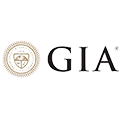
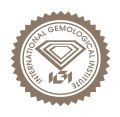

Laser engraving
The three major diamond certification laboratories HRD, IGI and GIA laser engrave the certificate number on the girdle (circumference) of the diamond. The certificate number is therefore engraved on all our HRD, IGI and GIA certified diamonds. This is a proof of the good match of the diamond and its certificate. The inscription is very small (to preserve the purity of the stone) and very difficult to read with the magnifying glass 10X.
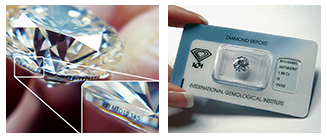
If you order only the diamond (without the jewel), it will be delivered under seal in a rigid plastic pouch (see photo below) for diamonds certified by HRD or by IGI. For GIA diamonds, the seal must be specifically requested in the comments field during the ordering process.
Diamond Fluorescence
Fluorescence is a luminous effect that some diamonds exhibit when exposed to ultraviolet light. They show visible light, usually blue.
Our recommandation
Since fluorescence may in some cases give a milky diamond appearance, prefer a diamond without fluorescence ("None" or "Nil")

None or Nil
Absence of fluorescence
Slight or Faint
Little fluorescence
Medium
Medium fluorescence
Strong
Strong fluorescence
Very Strong
Very strong fluorescence
Diamond Polishing
When cutting the diamond, each facet must be polished. If a diamond has no scratches or very minor scratches on the surface, the polish is high. The better the polishing, the more it allows the transmission of light through the different facets of the diamond.
Our recommandation
We recommend choosing a polish rated Excellent (EX) or Very Good (VG) to ensure the best finish and shine.
EXExcellent
VGVery Good
GGood
FFair
PPoor
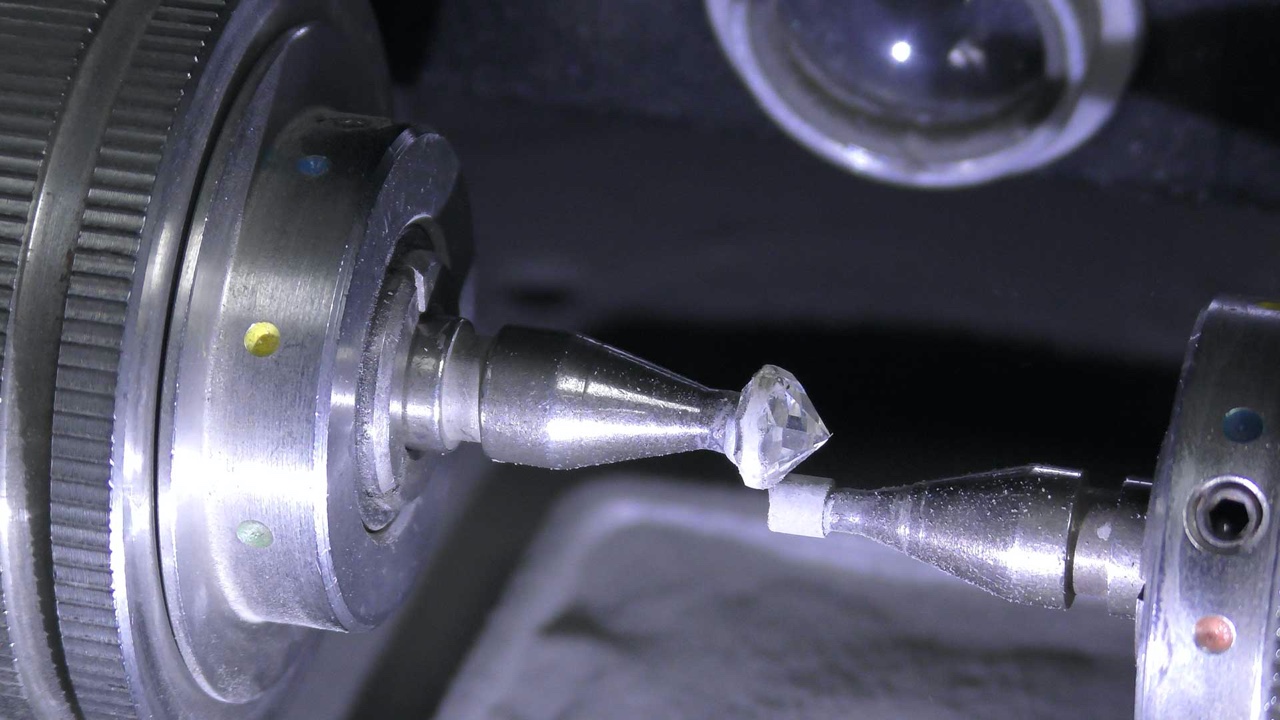
Diamond Symmetry
Symmetry describes the symmetrical accuracy of the facets of the diamond in terms of dimensions and angles, as well as the centering of the table and the centering of the breech point of the diamond. A higher level of symmetry creates optimal shine and scintillation.
Our recommandation
We advise you to choose a diamond with a symmetry rating equal to Excellent (EX) or Very Good (VG) to maximize the sparkle.
EXExcellent
VGVery Good
GGood
FFair
PPoor
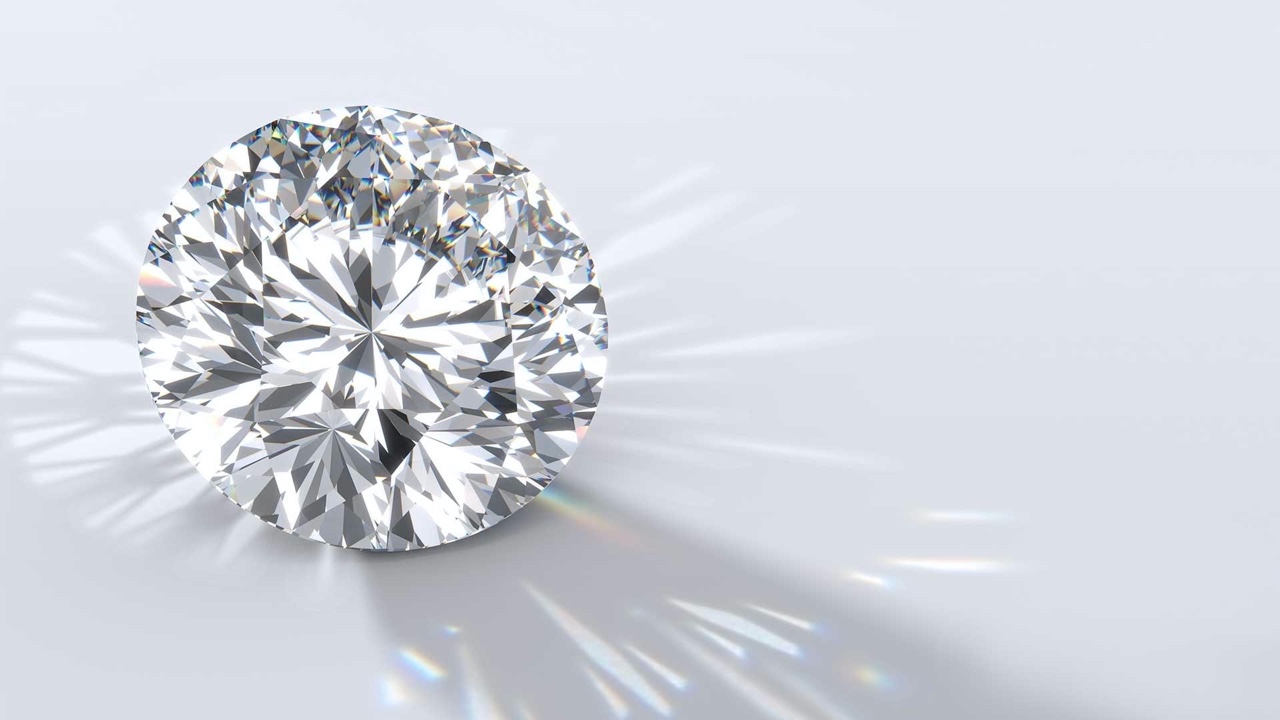
As you continue your navigation, you accept the use of cookies to provide our service and to secure transactions on our website.
Don't show anymore More info